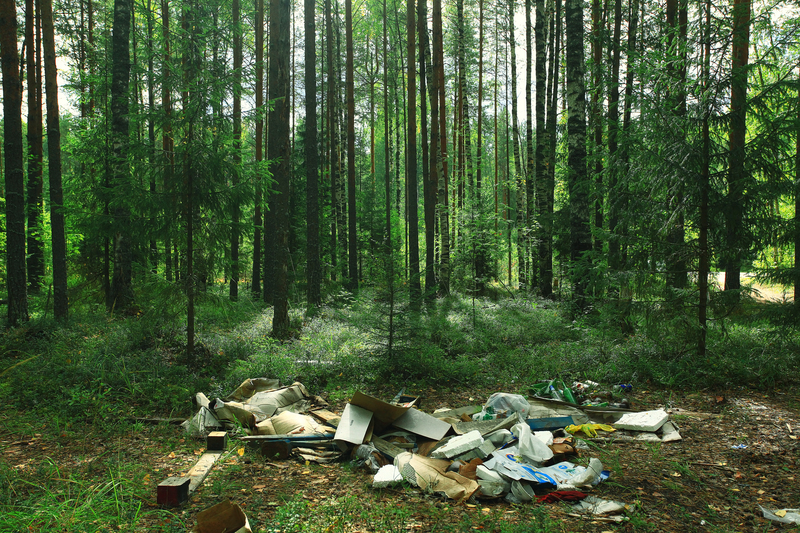Future Trends in Packaging and Cardboard Recycling
In a world that is quickly shifting towards sustainability, the future of packaging and cardboard recycling has never been more relevant. As businesses and consumers become increasingly aware of environmental concerns, innovative trends and technologies are shaping the way we produce, use, and recycle cardboard packaging. In this comprehensive article, we will explore the evolving landscape of the packaging industry, with a special emphasis on cardboard recycling trends, sustainability, and new technologies that are driving change.

The Evolving Role of Cardboard in Modern Packaging
Cardboard is a key material in packaging due to its versatility, cost-effectiveness, and recyclability. Its widespread adoption in retail, e-commerce, and logistics has led to an increasing focus on sustainable practices. To understand where the industry is headed, it's essential to examine the trends shaping both packaging design and cardboard recycling processes.
Trends Influencing the Packaging Industry
- Demand for Eco-Friendly Solutions
- Smart and Connected Packaging
- Personalization & Customization
- Minimization of Packaging Waste
- Use of Alternative and Recycled Materials
Increasing Consumer Awareness
Modern consumers expect brands to prioritize sustainability. As a result, businesses are responding with:
- Biodegradable packaging: Materials that naturally break down have become popular.
- Recyclable cardboard: Ensuring packaging is easy to recycle improves brand reputation.
- Minimalist packaging design: Reducing excess packaging lowers costs and environmental impact.
Innovations in Cardboard Packaging
Biodegradable and Compostable Solutions
Developments in biodegradable cardboard packaging are accelerating. These materials decompose quickly and safely, reducing landfill impact. Compostable coatings and glues, made from starch or plant-based polymers, enhance overall recyclability and compostability. Brands are adopting these solutions to align with consumer values and environmental regulations.
Lightweight and Durable Design
Advancements in manufacturing allow for lighter yet stronger cardboard packaging. This trend reduces resource consumption and emissions during transportation. Novel structures such as honeycomb and multi-layer designs increase durability without adding excess weight, thus enhancing sustainability and performance.
Smart Packaging
Smart packaging integrates technology such as NFC chips, QR codes, and AR experiences directly onto cardboard surfaces. This allows brands to track products, monitor freshness, and communicate transparent recycling instructions to consumers.
- Traceability: Digital tags help track products through the supply chain, aiding in responsible recycling and reuse.
- Consumer Engagement: Interactive features offer customers tips on how to recycle packaging effectively.
Design for Recycling
Designing packaging for recycling is integral for a circular economy. Companies are reducing the use of inks, adhesives, foils, and mixed materials that hinder cardboard recycling. Instead, they are adopting single-material packaging with water-based inks and simple construction for better recyclability.
The Future of Cardboard Recycling
As demand for cardboard packaging grows, effective recycling processes are vital to sustainability. The future of cardboard recycling will be shaped by innovations in collection, sorting, processing, and upcycling of secondary fibers.
Advanced Sorting Technologies
Traditional manual sorting is often labor-intensive and prone to contamination. New technologies are streamlining this critical step:
- AI-Driven Sorting Equipment: Sophisticated vision systems powered by artificial intelligence identify and separate cardboard types and remove non-recyclable elements.
- Robotics: Automated robotic arms increase the speed and precision of sorting facilities.
- Optical Sensors: Near-infrared (NIR) sensors discern between different packaging materials, improving sorting accuracy.
Improved Collection Systems
Municipalities and businesses are developing more efficient collection strategies:
- Source-separated collection: Keeping cardboard separate from general waste yields higher quality recycled fiber.
- Reverse logistics: Retailers and manufacturers are being incentivized to manage packaging returns, driving closed-loop supply chains.
Cleaner Recycling Streams
Contamination is a major challenge in cardboard recycling. Future developments include:
- Water-based coatings and adhesives: Facilitate easier separation during the pulping process.
- Consumer education: Clear labeling and instructions to keep food, liquids, and plastics out of recycling bins.
Upcycling and Valorization
Beyond traditional recycling, upcycling cardboard into value-added products is gaining momentum. Technologies now enable the conversion of recycled fiber into construction materials, furniture, and specialty paper products, extending the lifecycle and value of used cardboard.
Biotechnological Advances
Enzyme and microbe-based processes are emerging as a cleaner, more efficient way to break down complex fibers and inks during recycling. These methods yield higher-quality pulp and reduce chemical usage, offering a promising path for large-scale application.
Sustainable Sourcing and Circular Economy Initiatives
One trend that underpins future packaging and cardboard recycling is the adoption of circular economy principles. This approach ensures resources are kept in use for as long as possible, through reuse, repair, and recycling.
- Recycled Content Mandates: Regulations around the world increasingly require packaging to contain a minimum percentage of recycled materials.
- Extended Producer Responsibility (EPR): Brands are held accountable for the end-of-life management of their packaging, motivating investment in better recycling infrastructure and design.
- Closed-Loop Systems: Some companies collect and reuse their own packaging materials, drastically cutting waste and resource consumption.
Collaboration Across the Value Chain
Achieving a truly sustainable packaging future requires collaboration between raw material suppliers, packaging producers, brands, recyclers, and policymakers. Industry groups are setting standards for:
- Material certifications: Forest Stewardship Council (FSC) and similar certifications signal responsible sourcing.
- Innovation in adhesives and inks: Development of eco-friendly binders and coatings that don't impede recycling.
- Consumer communication: Approachable packaging guides encourage responsible disposal and recycling.
The Role of E-commerce and Retail in Shaping Packaging Trends
The exponential growth of e-commerce has had a huge impact on the demand for cardboard packaging. As consumers expect faster deliveries and safer shipments, packaging designs and recycling systems must adjust to these needs.
- Right-Sized Packaging: Automated systems tailor-fit packaging to each order, reducing material use and shipping costs.
- Returnable Packaging Programs: Reusable cardboard boxes and mailers are being tested for subscription models and frequent shoppers.
- Branded Recycling Initiatives: Retailers partner with logistics and recycling companies to create take-back programs for packaging.
Cardboard Recycling and Packaging Around the World
Europe
The European Union enforces stringent recycling targets for paper and cardboard, with a strong emphasis on circular economy actions:
- The Packaging and Packaging Waste Regulation (PPWR) aims for all packaging to be reusable or recyclable by 2030.
- Extended Producer Responsibility schemes support infrastructure upgrades and consumer education.
North America
The U.S. and Canada are seeing increased investment in advanced recycling facilities as well as voluntary industry commitments to using more recycled content.
- State-level bans on non-recyclable packaging materials push innovation.
- Major brands pledge to make all packaging recyclable, compostable, or reusable in coming years.
Asia-Pacific
Asia-Pacific economies are rapidly developing waste management infrastructure while experimenting with unique local solutions:
- Incentivized consumer recycling programs increase cardboard recovery rates.
- Alternative fiber sources (e.g., bamboo, agricultural residues) are gaining popularity as sustainability rises high on the agenda.

Key Takeaways for the Future of Packaging and Cardboard Recycling
- Sustainability is Non-Negotiable: Consumers and regulators alike demand truly eco-friendly packaging solutions.
- Technology Drives Progress: AI, robotics, and biotechnology are revolutionizing cardboard recycling processes.
- Material Innovation: Use of recycled, biodegradable, and alternative fibers is set to increase.
- Collaboration Unlocks Change: Success relies on the entire value chain working together toward a circular packaging economy.
Conclusion: The Road Ahead
The future of packaging and cardboard recycling is promising, with impactful trends and innovations creating a more responsible industry. Businesses that invest in sustainable design, smart packaging technologies, and efficient recycling systems will be best positioned to lead in the evolving market. Meanwhile, consumers play a powerful role by supporting brands that champion environmental stewardship.
As we look ahead, the concerted effort of industry, government, and individuals ensures that cardboard packaging is not just recyclable--but a vital link in a truly sustainable and circular economy. By keeping pace with these developments, stakeholders across the supply chain can unlock environmental and economic value, paving the way for a cleaner, greener future.
Stay informed, stay engaged, and participate in the journey toward a future where packaging waste becomes a resource, not a problem. The time for action in cardboard recycling and sustainable packaging is now.